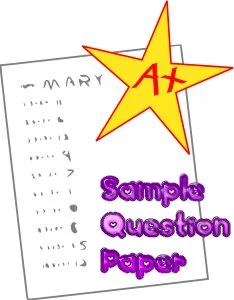IPU BCA Semester 1: Introduction To Computer and IT - End Term Examination (2013)
END TERM EXAMINATION
FIRST SEMESTER - BCA
DECEMBER 2013
INTRODUCTION TO COMPUTER AND IT
(BCA-107)
Note: Attempt five questions including Q.No.1 which is compulsory. Select one question from each unit.
Question 1:
(a) What is cache memory?
(b) What is a micro program?
(c) What factors determine the storage capacity of disks?
(d) Why was BCD code extended to EBCDIC?
(e) Differentiate between positional and non-positional number systems.
(f) What do you understand by the term “ Collating Sequence”?
(g) Distinguish between throughout and turnaround time.
(h) What is the main advantage of hypertext?
(i) What id an IP address? Why do we need it?
(j) What is an Internet ? Explain. (2.5 ×10=25)
UNIT I
Question 2: Draw a block diagram to illustrate the basic organisation of a computer system and explain the functions of the various units. (12.5)
Question 3:
(a) Explain how are data read from and recorded on ….. (8)
(i) An optical disk, and
(ii) a CDROM
(b) What is the drawback of an optical disk storage? (4.5)
UNIT II
(a) Why is it advisable to plan the logic of a program before writing it? (4)
(b) Write a pseudo code for finding the largest of the given 4 (for) integers. (4)
(c) Draw a flowchart for the problem above in part (b). (4.5)
Question 5:
(a) Distinguish between an assembler, interpreter and a compiler. (3)
(b) What is a multiprocessing operating system? (3)
(c) Explain the Time Sharing Operating System. What are its advantages? (6.5)
Question 6:
(a) What is meant by the base of a number system? Explain its role in positional number systems. (3)
(b) Find the binary, octal and hexadecimal equivalents of the following decimal numbers……
(i) 94.76 10 (ii) 234.334 10 (6)
(c) Explain using an example, the additive approach of subtraction. (3.5)
Question 7:
(a) Explain briefly how multiplication and division operations are performed using additive approach. (6)
(i) Multiply 110111 by 111 (ii) Divide 110001 by 101
(b) What is the advantage of using the complimentary system, to perform subtraction in digital computers? (6.5)
(i) Subtract 323 10 from 136 10 using the 2’s compliment form.
(c) Explain the Time Sharing Operating System. What are its advantages? (6.5)
Question 8:
(a) What is a Computer Network ? Explain (2.5)
(b) Discuss the various Network topologies alongwith their advantages and disadvantages. (10)
Question 9:
(a) What is a MODEM? Explain. (3)
(b) Explain the different types of transmission media. (9.5)




